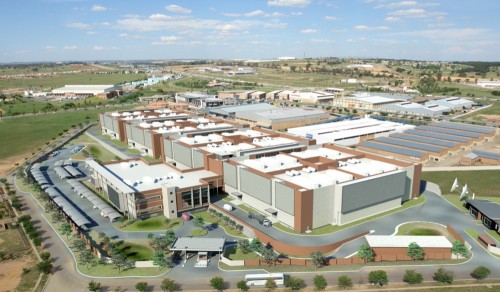A short distance off the highway between Johannesburg and Pretoria, not far from the Samrand offramp north of Midrand, is a large but otherwise nondescript building.
To the casual observer, it looks like many of the corporate warehouses that dot the countryside for miles around.
But this is no ordinary building. It houses the only purpose-built tier-4 data centre in the southern hemisphere and there are only six or seven facilities like it in the world.
The data centre, built by Standard Bank at a cost of R1,6bn — that excludes the cost of computer equipment — is an engineering marvel. The 65 000sq m site, consisting of two adjacent properties, allows for up to eight data-centre modules of 1 500sq m each. Four have been constructed initially, providing 6 000sq m of capacity in total.
Peter Wharton-Hood, group deputy CEO at Standard Bank, tells TechCentral that the investment in the new data centre was necessary as its existing, 3 200sq m facility at River Club in Johannesburg had reached the end of its design life.
“The last time Standard Bank made a call about a data centre was in the early 1970s,” he says.
The River Club facility had a design life of 30 years, and has been expanded several times to cater for growing demand.
Standard Bank has been criticised for spending R1,6bn on a new facility, especially given the parlous state of the economy and recent job losses at the bank.
But Wharton-Hood says the investment was needed and, even though the decision to build the Samrand facility was taken in 2008 when the economy was in much better shape, the bank would make the same investment decision today.
The Samrand facility was completed on time and 8% under budget, Standard Bank says.

In more developed markets such as Europe and the US, it’s become possible for banks to lease access to data centre facilities from dedicated service providers. In the SA context, that’s not possible, says Wharton-Hood, hence the decision by Standard Bank to build its own facility.
The bank decided to build a tier-4 facility — meaning it offers 99,995% uptime, among other things — given how important online and real-time processing has become in financial services.
It’s the only purpose-built tier-4 facility in the southern hemisphere, says Wharton-Hood. “We took a view that this is the way banks will operate in the future.”
The bank has taken a number of other factors into account in building the facility. It’s tried to ensure the facility is as environmentally friendly as possible — as far as an energy-guzzling data centre can be. This includes providing solar-powered heating for the office block and a grey-water system to reduce waste.
The site stores 880 000 litres of diesel on site — about eight times the capacity of the average petrol station. That’s enough to keep the data centre humming for up to a week without electricity.
Standard Bank has slowly begun moving production equipment into the Samrand facility, though group chief information officer Lars Gustavsson says it will take another year before it becomes Standard Bank’s main production site. River Club will become mainly a disaster recovery site and big sections of the bank’s data centre in the Johannesburg city centre are to be decommissioned.
The Samrand facility offers full redundancy, with both Telkom and Neotel providing fibre-optic links. The City of Tshwane has provided redundant electricity and even constructed a new electrical substation. About 15MVA is available now, with another 15MVA to be provided by 2014.
For now, the data centre will only serve the SA market. However, as telecoms infrastructure improves elsewhere in Africa, Wharton-Hood says there is a possibility that Samrand could eventually become a production facility for Standard Bank operations elsewhere on the continent.
“I’m convinced connectivity among African countries will improve dramatically in the next five years,” he says. “This will be driven by undersea cables and general investment in telecoms infrastructure. Our production centre in SA will then play a role, though to what extent, I don’t know yet.”
What the bank is not keen to do is to provide production facilities for companies — such as Microsoft and Google — wanting to provide cloud-computing services.
“We are not looking at direct insourcing of other people’s processing needs,” says Gustavsson.
However, the bank is considering leasing space in the facility to telecoms operators and other companies that require data centre capacity. Wharton-Hood says this wasn’t part of the original business case, but makes sense to defray costs. — Duncan McLeod, TechCentral
- Subscribe to our free daily newsletter
- Follow us on Twitter or on Facebook





